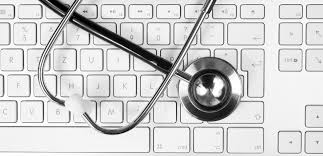**Title: Remote Medical Billing: Streamlining Healthcare Revenue Cycle Management**
**Introduction:**
In the ever-evolving landscape of healthcare, medical billing plays a critical role in ensuring that healthcare providers receive timely and accurate reimbursement for the services they provide. Traditionally, medical billing has been done in-house by medical staff or outsourced to third-party billing companies. However, with advancements in technology and the rise of remote work, remote medical billing has become an increasingly popular option for healthcare organizations looking to streamline their revenue cycle management processes.
**What is Remote Medical Billing?**
Remote medical billing, also known as telecommuting medical billing, involves professionals handling medical billing tasks from a remote location rather than working in a traditional office setting. This model allows for greater flexibility, cost savings, and efficiency in managing the billing process for healthcare providers.
**Benefits of Remote Medical Billing:**
1. Cost-effective: By outsourcing medical billing tasks to remote professionals, healthcare organizations can save on overhead costs associated with maintaining an in-house billing department.
2. Flexibility: Remote medical billing allows professionals to work from anywhere, providing greater flexibility in managing work-life balance.
3. Efficiency: Remote medical billing can lead to faster processing of claims, reduced billing errors, and improved cash flow for healthcare providers.
4. Access to specialized talent: Remote medical billing services often tap into a pool of experienced professionals who specialize in medical billing, leading to higher quality and accuracy in billing processes.
**Practical Tips for Implementing Remote Medical Billing:**
1. Invest in secure technology: Ensure that remote medical billing professionals have access to secure software and technology to protect patient data and comply with HIPAA regulations.
2. Establish clear communication channels: Regular communication between remote billing professionals and the healthcare organization is key to ensuring smooth operations and addressing any issues that may arise.
3. Provide ongoing training: Stay updated on changes in medical billing regulations and provide training to remote billing professionals to keep them informed and up-to-date on best practices.
4. Monitor performance: Implement metrics to track the performance of remote billing professionals and identify areas for improvement.
**Case Study:**
ABC Medical Center, a busy healthcare facility, implemented remote medical billing services to streamline their revenue cycle management processes. By outsourcing their billing tasks to a team of remote professionals, ABC Medical Center saw a significant reduction in billing errors, faster claims processing, and improved revenue collection rates.
**First-Hand Experience:**
As a remote medical billing professional, I have had the opportunity to work with multiple healthcare organizations in managing their billing processes. The flexibility and efficiency of remote medical billing have allowed me to provide high-quality services while maintaining a healthy work-life balance.
**Conclusion:**
Remote medical billing offers healthcare providers a cost-effective and efficient solution for managing their revenue cycle management processes. By implementing best practices and leveraging remote talent, healthcare organizations can improve billing accuracy, streamline operations, and ultimately enhance their financial performance. Embracing remote medical billing can lead to a more efficient and effective revenue cycle management strategy in today’s healthcare landscape.



